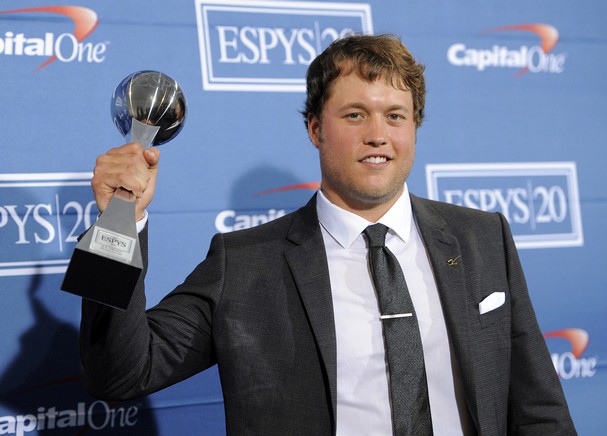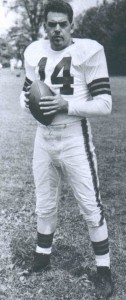You remember 2012, don’t you? Among quarterbacks with 200 pass attempts, Colin Kaepernick ranked 2nd in Adjusted Net Yards per Attempt, RG3 ranked 4th, and Cam Newton ranked a respectable 11th. The young quarterbacks — Kaepernick and Griffin were in their first years as starters, while Newton was just 23 — seemed poised to take over the NFL. If they were this good in 2012, how good would they be in 2014?
As it turns out, not all young quarterbacks improve gradually with age. Some even take a step back. Or, in the case of these three, two steps back. Take a look at their respective ANY/A ratings in each of the past three seasons:
In terms of Relative ANY/A — that is, ANY/A minus league average — Kaepernick has fallen from +1.6 to +0.8 to -0.6. Newton has had a similar decline but just from a lower starting point, dropping from +0.7 to -0.2 to finally -0.7. Griffin, of course, has seen the most dramatic change, going from +1.5 to -0.4 to -1.0 last year.
Each player has his own story. RG3 was lights out as a rookie, then struggled in 2013 seemingly as a result of tearing his ACL in the 2012 playoffs, a breakdown in his relationship with the Shanaclan, and [insert your other favorite reason here]. His descent continued in 2014, and he frankly looked like a lost quarterback, with this play being perhaps the most damning example.
For Newton, the issue seems to be entirely about a decline in his supporting cast, along with injury issues in 2014. I’m not particularly worried about Newton, who almost seems to make the cut (you’ll see what I mean below) on a technicality. I have little doubt that a healthy Newton with an improved supporting cast — you know, if we ever see that — would be a very productive quarterback. Kaepernick, to me, is the real wild card.
Kaepernick’s RANY/A dropped by 0.84 from 2012 to 2013, and then by 1.34 from 2013 to 2014. Which made me wonder: how often does a quarterback who is still in his 20s see a decline in RANY/A of at least 0.5 in consecutive years?
Since 1970, it has happened just 19 times, with Kaepernick, Newton, and Griffin being the most recent three. Newton and Griffin are also two of the three youngest, while Kaepernick is more in the middle of things (he was a sneaky old 27 in 2014). So what happened to the first 16?
Six of them did not retain their jobs, and you can read about them in this footnote. What about the other 10?
There are some promising stories in here. Daunte Culpepper was great at age 23, decliend at age 24, was even worse at age 25, and then was great at age 26 and had a career year at age 27.
Dave Krieg had great efficiency numbers at age 25, pretty good (but worse) ones at age 26, and then struggled at age 27. But at age 28 he had a great season, and he had a great 9-game year at age 30.
Neil O’Donnell was a Pro Bowler in his first full year as a starter at age 26, but took steps backwards at ages 27 and 28. Then, at age 29, he had a career year and made it to the Super Bowl.
Neil Lomax was outstanding at age 25, then had RG3-like slides at ages 26 and 27. Then, at age 28, he had another great season, and followed it up with a great performance at age 29, too.
Jim Everett also took an RG3-like slide: he was unreal at age 26, but below average by age 28. He rebounded at age 29 and was above average during his age 31 and 32 seasons, too.
Ken O’Brien was lights out at age 25, worse at age 26, and then average at age 27. The age 25 year (1985) looks like the outlier, though: he stayed as a roughly league average quarterback from ages 28 through 31.
Jon Kitna looked completely washed up at age 29, but he rebounded with two solid statistical years at ages 30 and 31.
Boomer Esiason was the NFL MVP at age 27, still very good at age 28, and then just average at age 29. He had one more average year, then struggled at age 31 in his final year in Cincinnati, before a mini-resurrection with the Jets.
Trent Dilfer showed steadily decline from ages 25 to 27 during his final three years in Tampa Bay before… not really improving during his first year in Baltimore, despite you know, winning a Super Bowl. He did put up some impressive efficiency numbers over the next couple of seasons in part-time duty, however.
Mark Malone is an example of things not getting much better, but even he still rebounded at age 30 after declining at ages 28 and 29.
So What Does This Post Mean?
Well, let’s start with the obvious: it’s not common for a young quarterback to take consecutive steps backwards, and we have three of them that have done so since 2012. Kaepernick, at least to me, is the most intriguing of the bunch, as it’s harder (at least for me) to really understand what’s going on there. I have a pretty good idea of where Newton’s career is headed, and Griffin seems destined for failure in Washington (and perhaps beyond), while Kaepernick truly appears to be at a crossroads.
The table above presents overwhelmingly positive news if you are a 49ers fan. Could Kaepernick have a revival the way Culpepper did in 2003 and 2004? Could he turn into an above-average quarterback like Lomax or Everett? Eight of the ten quarterbacks who had declines like Kaepernick bounced back the following year. That’s promising.
Of course, it doesn’t mean all that much, either. Kaepernick is an individual, not an amalgamation of historical figures. And his struggles in San Francisco last year were very real, and didn’t appear to be a product of a poor supporting cast. And it’s not as though most of the news for the 49ers has been very positive this offseason, either.
But I guess if there’s one takeaway from this post, it’s this: even if a young quarterback struggles for a couple of years, the odds are in his favor that he’ll bounce back. For Newton, that seems like a safe bet. For Griffin, his ANY/A was so poor that an improvement seems very likely, too. For Kaepernick, the 2015 season looks like a real tipping point in his career, and one I can’t quite get a read on just yet.





